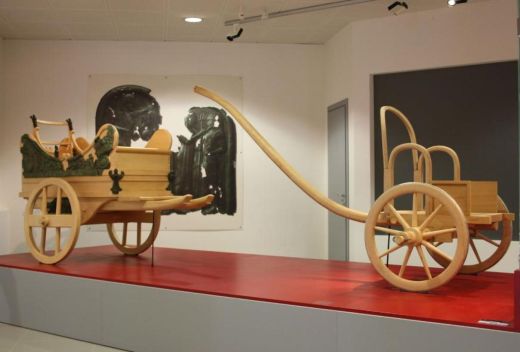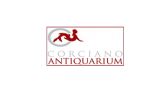Palaeontology
The tour of this museum begins with the paleontological section, home to the remains of ammonite fossils from Migiana’s Mesozoic Era and mammals of Ellera’s quartenary period.
Prehistory and Protohistory
The Augusto Morioffre Collection provides an interesting look at Umbria’s prehistory. The most important pieces were discovered near Sant’Egidio (Assisi) and belong to two main groups: the High Palaeolithic and the Bronze Age.
During the Bronze Age, Corciano was an important crossroads between Perugia and Lake Trasimeno, where many relics dating to this era have been found.
Before the Iron Age, a settlement rose between Perugia and Lake commonly known as the “Cultura Villanoviana,” a culture characterised by geometric decorations etched into the surfaces of vases.
Classic Archaeology
This section begins with a presentation of relics from the Archaic Era. In April of 1812, outside of Castel San Mariano, they found a large number of bronze items dating to the Archaic Era. These may have been placed in graves, or belonged to the horde of a local potentate. They were part of an impressive set of utensils used for the preparation of food and for banquets, as well as tools for personal use and plates for covering three wagons, which grave robbers later sold to the big collectors of the time and were then subsequently acquired by the Archaeological Museum of Perugia and other important European museums. The useum also features life-size reconstructions of one of the two currus and of the carpentum.
In the part dedicated to San Mariano is the sarcophagus of the Volpaie, which belonged to a type of monument built with a variety of limestone known as pietra fetida.
The next section is dedicated to sanctuaries, featuring an exhibition of votive bronzes and decorative items made of terracotta.
The Hellenistic Era is represented with items discovered in the necropolis of Strozzacapponi and of Fosso Rigo. The reconstructions of three graves are of particular interest, with funerary items placed exactly as they were found inside the chamber.
The next section deals with the Roman presence in the area thanks to a complex system of roads with via Amerina as its main artery. During the Roman Era, Corciano’s countryside was dotted with roman villae, structures which typically included a residential section and a workshop area.


